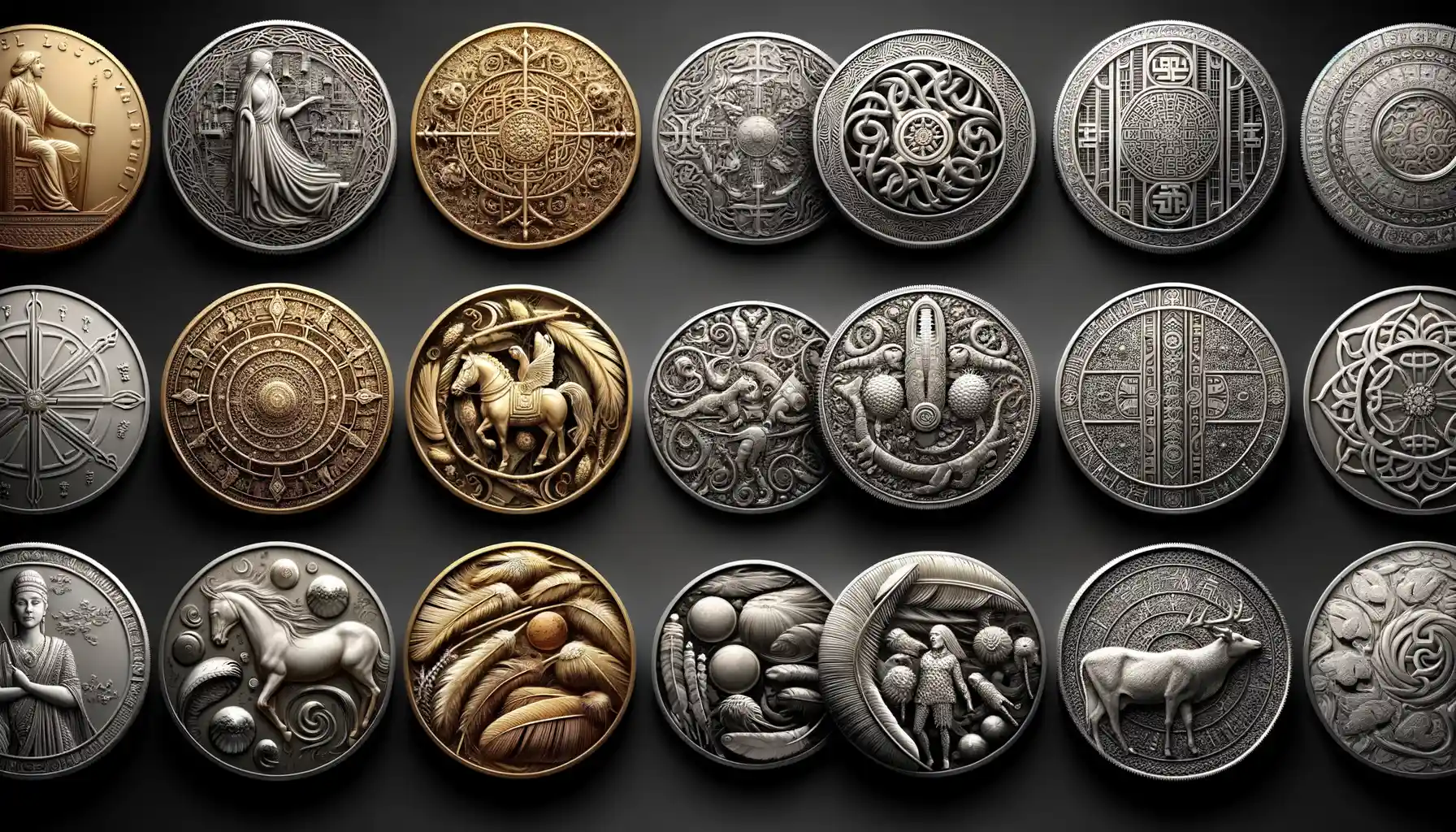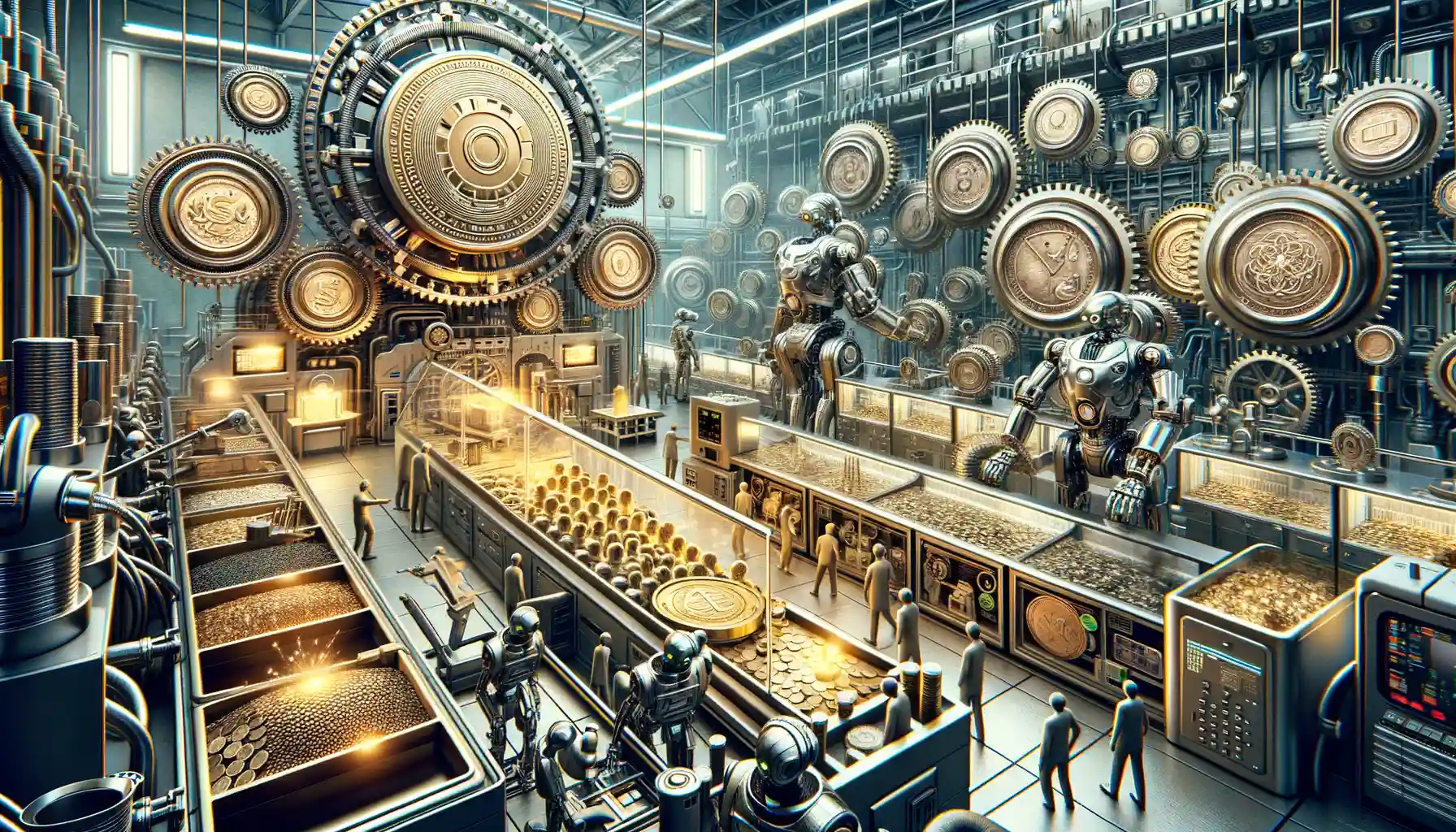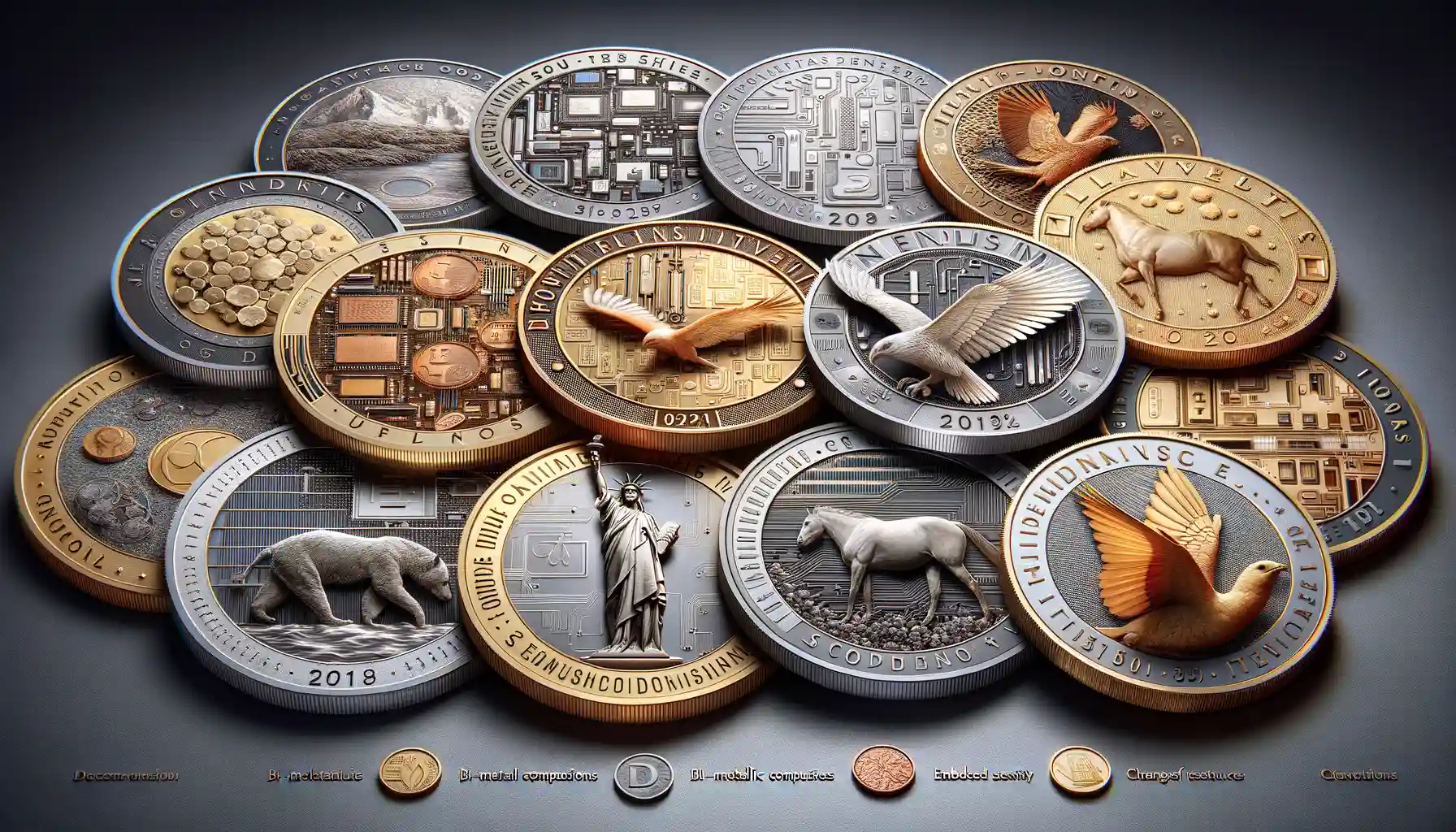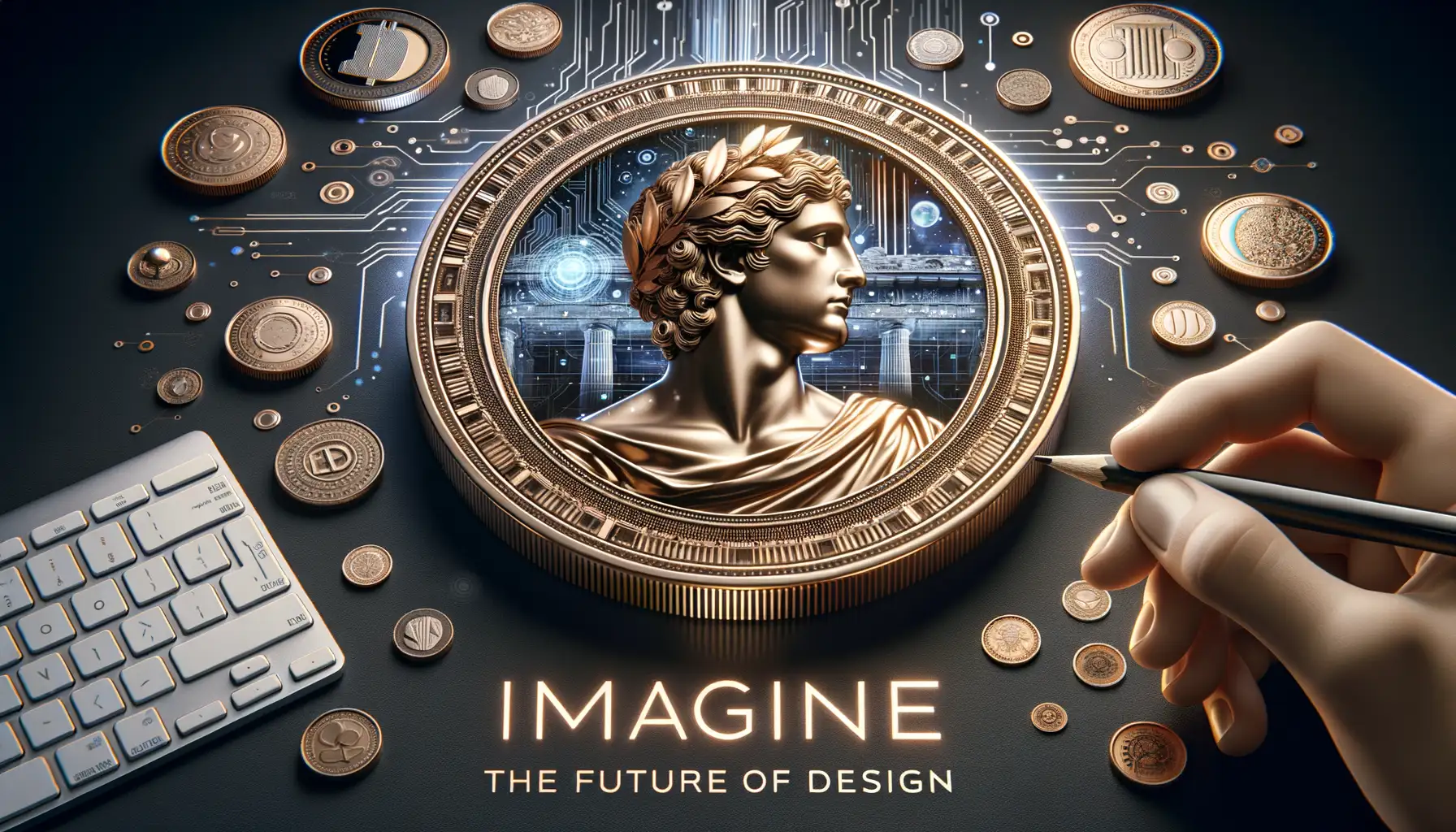Origins of Coinage and Early Designs
A Journey Through the Birth of Coinage
Imagine a world without coins—no jingling change in pockets, no silver glint to catch the sunlight. Hard to picture, right? The story of coinage begins around 600 BCE in ancient Lydia (modern-day Turkey). Here, the first coins were forged from an enchanting blend of gold and silver called electrum. They weren’t just currency; they were symbols of power and ingenuity. Picture merchants exchanging these gleaming nuggets at bustling markets, their strange imprints sparking fascination.
But they didn’t look like the polished coins we know today. These early designs were crude yet captivating—simple punches, animals, and geometric patterns. Lydian coins often had lions pawing across their surfaces, roaring silently through time. Why lions? They symbolized strength, dominance, and royal lineage. Even then, every scratch on a coin told a story.
- The Greeks soon followed suit, crafting coins that elevated design to an art form—think owls for wisdom or gods standing tall with divine authority.
- Over time, civilizations used coins to express identity: who they were, what they worshipped, and where they belonged in the world.
More Than Money: How Early Coins Connected Societies
What’s astonishing is how these tiny discs transcended mere trade. A Roman denarius was more than payment—it carried Caesar’s image, spreading his legacy far beyond the Empire’s boundaries. Coins were ambassadors, whispering tales of culture, faith, and politics wherever they traveled.
Take the Chinese spade money, shaped like farming tools—an elegant nod to the agrarian roots of their economy. Meanwhile, Indian punch-marked coins featured symbols hammered by hand, each mark like a signature from history.
These designs weren’t just functional—they were revolutionary. They bridged languages, united economies, and reflected humanity’s creativity in its rawest, most enduring form. Look closely at an ancient coin, and you’re not just holding metal; you’re cradling a piece of someone’s world.
The Influence of Art and Culture on Coin Design

A Canvas of Culture: Art in Every Coin
Coins are more than just metal discs—they’re tiny canvases. Across centuries, they’ve been shaped by the art and soul of their times, carrying whispers of civilizations long gone. Think about it: when you hold an ancient coin, you’re touching a piece of history carved by an artist’s hand.
Take ancient Greek coins as an example. These weren’t just tools for trade; they were masterpieces. The owl of Athena, with its piercing gaze, symbolized wisdom and prosperity. Or how about Rome? Their coins celebrated emperors and conquests, turning every denarius into a bold proclamation of power.
Fast forward to the Renaissance—suddenly, even coinage became part of the artistic revolution. Minute portraits, intricate borders, and allegorical designs began to feature, reflecting humanity’s thirst for beauty and meaning.
- The Baroque period introduced coins so ornate they could double as jewelry.
- During the Art Nouveau movement, swirling motifs found their way onto minting dies.
What’s astonishing is how art binds us across time and space. That same desire to tell stories through symbols persists in modern coins, from commemorative designs to avant-garde experiments.
Technological Advancements in Minting and Their Impact

Revolutionizing Minting: From Hand Tools to High-Tech Marvels
Imagine a world where every coin was a tiny masterpiece, hand-struck and unique, but prone to imperfections. That was the reality centuries ago when ancient minting relied on hammering designs onto metal blanks. Fast forward to today, and the process feels almost sci-fi in comparison! Modern minting is a symphony of speed, precision, and innovation—and its impact on coins is nothing short of extraordinary.
With the advent of computer-aided design (CAD) and laser engraving, mints can now craft intricate patterns, hidden micro-details, and multi-dimensional textures with pinpoint accuracy. Consider the mesmerizing holograms or shimmering color effects on some commemorative coins—those would’ve paralyzed our ancestors with disbelief!
- Robotic presses: capable of minting hundreds of coins per second without a single flaw.
- Material breakthroughs: alloys that resist tarnish and innovative bi-metallic coins for added security.
- Anti-counterfeiting tech: nanoscale engravings so small they require microscopes to decode!
Thanks to these advances, coins are no longer just currency; they’re technological feats, pieces of art, and even tools in combating fraud. The blend of tradition and tech ensures every coin tells its story—with flair and finesse.
Modern Coin Design Trends and Innovations

The Artistic Revival of Coin Design
Modern coin design is where creativity meets advanced technology, creating miniature masterpieces that feel like they belong in an art gallery. Today’s coins are more than just money—they’re stories etched in metal, reflecting culture, history, and even humor. Take, for instance, the stunning Royal Mint £5 pieces, which feature intricate details of national treasures like Big Ben or Sherlock Holmes himself. These aren’t your average “heads or tails” coins; they’re conversation starters.
Designers now play with layers and textures, utilizing techniques like laser engraving to add depth and bring their creations to life. Some coins have holographic effects that shimmer like a mirage when tilted, while others experiment with colored enamels, adding vibrant splashes that almost leap off the metal.
- 3D reliefs create bold designs you can literally feel under your fingertips.
- Glow-in-the-dark elements give coins an otherworldly charm—perfect for celestial themes.
- Interactive features, such as movable pieces, transform coins into playful objects to explore.
Eco-Friendly Innovations Making Headlines
Sustainability has also entered the world of coins. Modern mints are breaking traditions by using recycled metals to craft their creations, reducing waste while maintaining beauty. Even the packaging gets a green makeover, with biodegradable cases replacing plastic. For example, Canada’s Mint recently produced a special-edition coin made from reclaimed silver, proving that old treasures can birth new marvels. Coins are evolving, not only in appearance but in values too—literally and symbolically.
The Future of Coin Design: What Lies Ahead

Reimagining Coin Design in a Digital World
The future of coin design feels like stepping into an artist’s dream fused with the precision of cutting-edge technology. Imagine coins that aren’t just currency, but storytelling canvases—vividly textured surfaces, augmented with holographic elements that shimmer under sunlight. With advancements in AI and 3D printing, what was once laboriously carved by hand might soon be generated by algorithms capable of creating intricate, jaw-dropping detail no human could match.
But it’s not just about looks. The coins of tomorrow may carry more than their physical weight; they could integrate embedded microchips, acting as interactive keys to digital worlds. Want proof? Picture a commemorative coin unlocking an exclusive virtual museum tour or granting access to a piece of NFT art. This is where the tangible meets the intangible.
- Biometric features: Coins personalized to you, recognizing your fingerprint or touch.
- Eco-conscious materials: Designs crafted from recycled metals or even biodegradable alloys.
- Dynamic designs: Surfaces that shift under light, bringing scenes and symbols to life.
The possibilities are as boundless as human creativity itself. The future of coin design isn’t just about how these small wonders look—it’s about how they’ll touch our lives.
